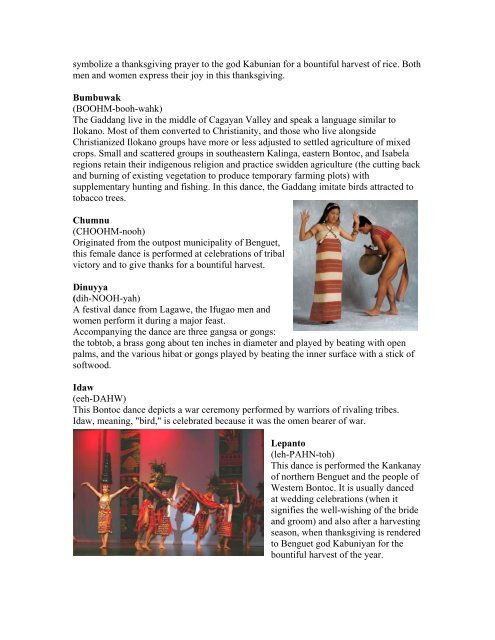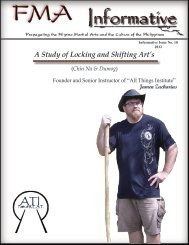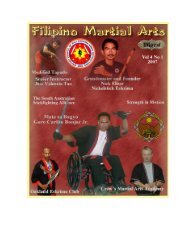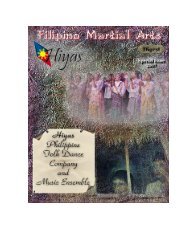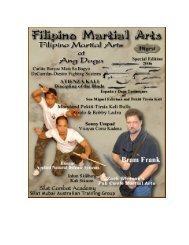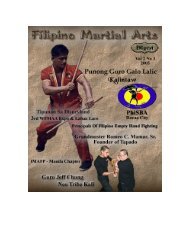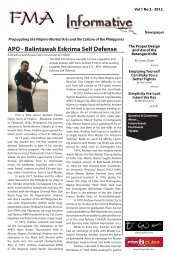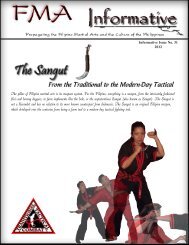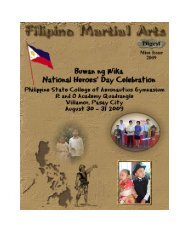Untitled - FMA Informative
Untitled - FMA Informative
Untitled - FMA Informative
You also want an ePaper? Increase the reach of your titles
YUMPU automatically turns print PDFs into web optimized ePapers that Google loves.
symbolize a thanksgiving prayer to the god Kabunian for a bountiful harvest of rice. Both<br />
men and women express their joy in this thanksgiving.<br />
Bumbuwak<br />
(BOOHM-booh-wahk)<br />
The Gaddang live in the middle of Cagayan Valley and speak a language similar to<br />
Ilokano. Most of them converted to Christianity, and those who live alongside<br />
Christianized Ilokano groups have more or less adjusted to settled agriculture of mixed<br />
crops. Small and scattered groups in southeastern Kalinga, eastern Bontoc, and Isabela<br />
regions retain their indigenous religion and practice swidden agriculture (the cutting back<br />
and burning of existing vegetation to produce temporary farming plots) with<br />
supplementary hunting and fishing. In this dance, the Gaddang imitate birds attracted to<br />
tobacco trees.<br />
Chumnu<br />
(CHOOHM-nooh)<br />
Originated from the outpost municipality of Benguet,<br />
this female dance is performed at celebrations of tribal<br />
victory and to give thanks for a bountiful harvest.<br />
Dinuyya<br />
(dih-NOOH-yah)<br />
A festival dance from Lagawe, the Ifugao men and<br />
women perform it during a major feast.<br />
Accompanying the dance are three gangsa or gongs:<br />
the tobtob, a brass gong about ten inches in diameter and played by beating with open<br />
palms, and the various hibat or gongs played by beating the inner surface with a stick of<br />
softwood.<br />
Idaw<br />
(eeh-DAHW)<br />
This Bontoc dance depicts a war ceremony performed by warriors of rivaling tribes.<br />
Idaw, meaning, "bird," is celebrated because it was the omen bearer of war.<br />
Lepanto<br />
(leh-PAHN-toh)<br />
This dance is performed the Kankanay<br />
of northern Benguet and the people of<br />
Western Bontoc. It is usually danced<br />
at wedding celebrations (when it<br />
signifies the well-wishing of the bride<br />
and groom) and also after a harvesting<br />
season, when thanksgiving is rendered<br />
to Benguet god Kabuniyan for the<br />
bountiful harvest of the year.


